- HOME
- Campus News: Japanese tradition at the heart of Aobayama Campus
Campus NewsJapanese tradition at the heart of Aobayama Campus
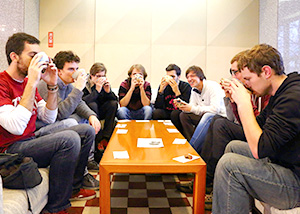
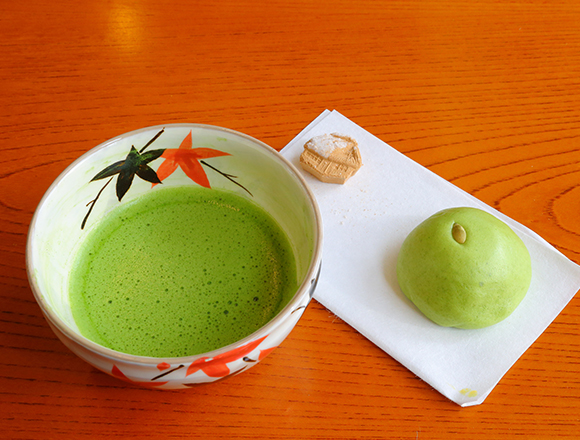
Several times a year, everyone at School of Engineering is invited to participate in a tea ceremony at the Aoba Memorial Hall on the Aobayama Campus. In Japan, when one mentions “tea” without specifying the type, it refers to the Japanese green tea called matcha, green powder dried and milled from the highest quality of tea leaves that is the centerpiece of the well-known Japanese tea ceremony. This invitation is therefore a unique opportunity for foreign students to experience the quiet and relaxing traditional culture practice called Sadou in Japanese, literally the “way of the tea”. It comprises a ritual of preparing and serving Japanese green tea together with traditional Japanese sweets to balance the bitter taste of the tea. This is a unique art strongly influenced by Zen Buddhism that synthesizes the preparation and drinking of tea together with spirituality, history, architecture, and the appreciation of aesthetic handmade tea utensils.
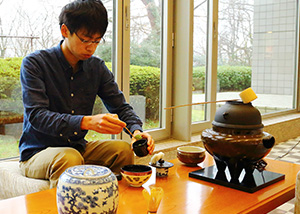
In the 14th century, the drinking of matcha during the Japanese tea ceremony was a upper class social event. Its objective was to create relaxed communication between the host and his guests against a background of aesthetic contemplation of paintings, flower arrangemens, ceramics, calligraphy, and tea utensils in a serene atmosphere. Its ultimate aim is the attainment of deep spiritual satisfaction through the drinking of tea and silent contemplation. Nowadays, the tea ceremony is a relatively popular hobby. Classes are available and students who persevere and learn by heart of all the rituals are awarded a Japanese tea ceremony diploma.
At some temples and gardens, one can enjoy matcha in a typical Japanese environment. The tea is served in a tranquil tatami room with views onto beautiful scenery such as a Japanese zen garden.
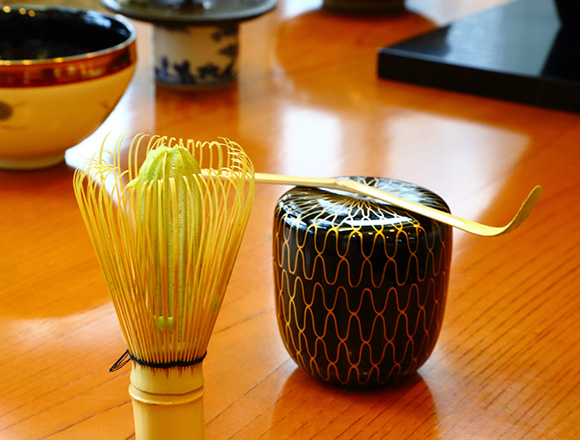
Among the utensils required for the Japanese tea ceremony there is the chasen, the tea-whisk made from a single piece of bamboo. The chashaku, the tea scoop, is another indispensable tool to properly participate in the tea ceremony. It is also made from a single piece of bamboo or sometimes from ivory. Finally, there is the hishaku, a utensil with a handle and dipper used to ladle hot water.
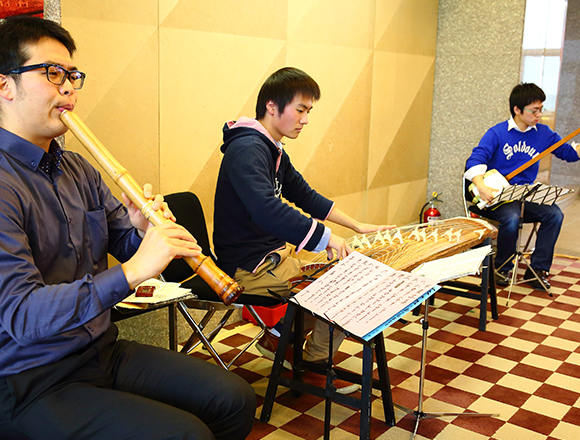
The tea ceremony is accompanied by Japanese music played with traditional Japanese instruments such as the shakuhachi, the koto and the shamisen. The shakuhachi is a Japanese end-blown flute made of bamboo while the koto is a traditional Japanese stringed musical instrument known to be the national instrument of Japan. Finally, The shamisen is a three-stringed instrument played with a plectrum called a bachi. The instrument is used to accompany kabuki as well as plays and folk songs.
